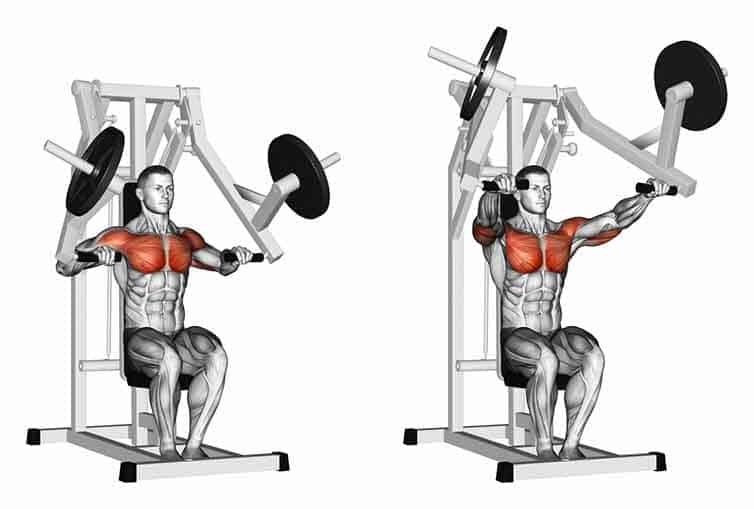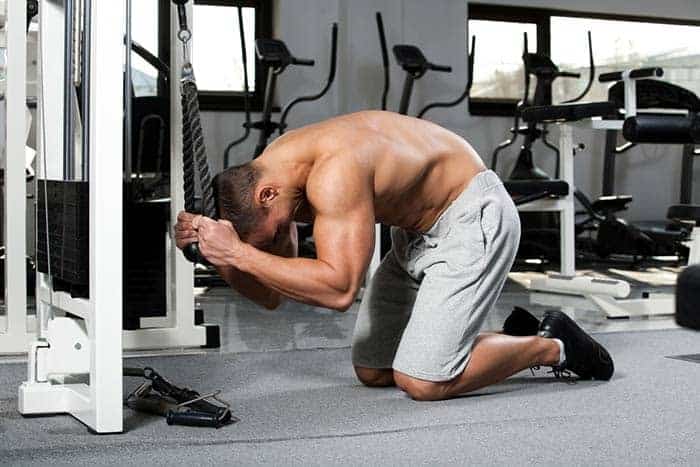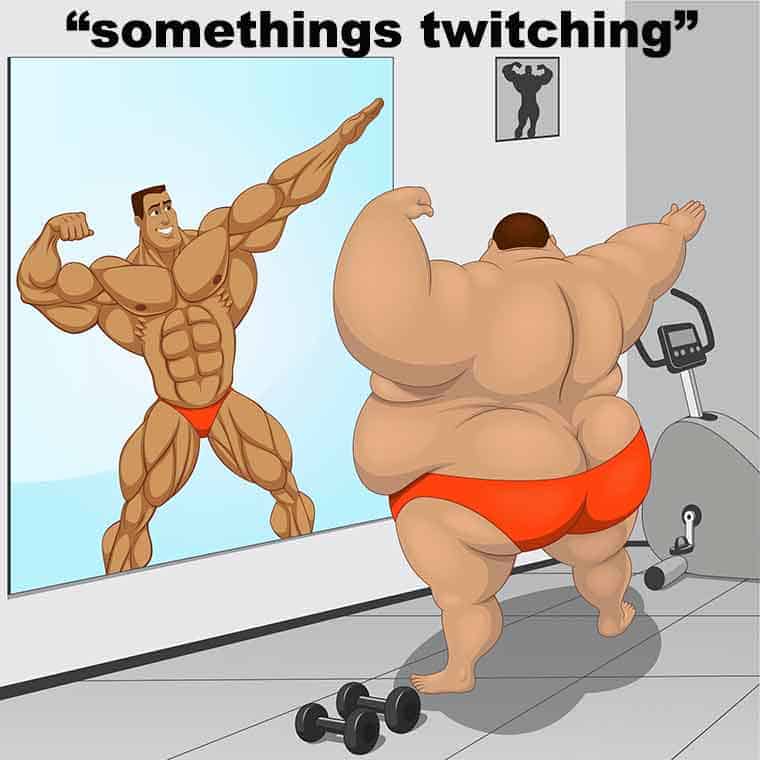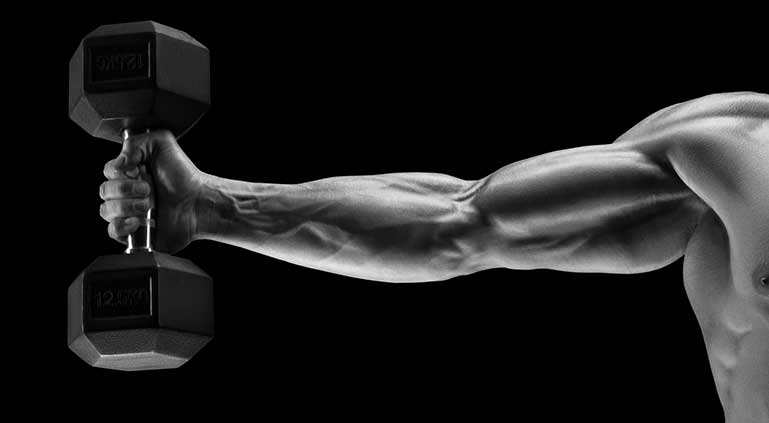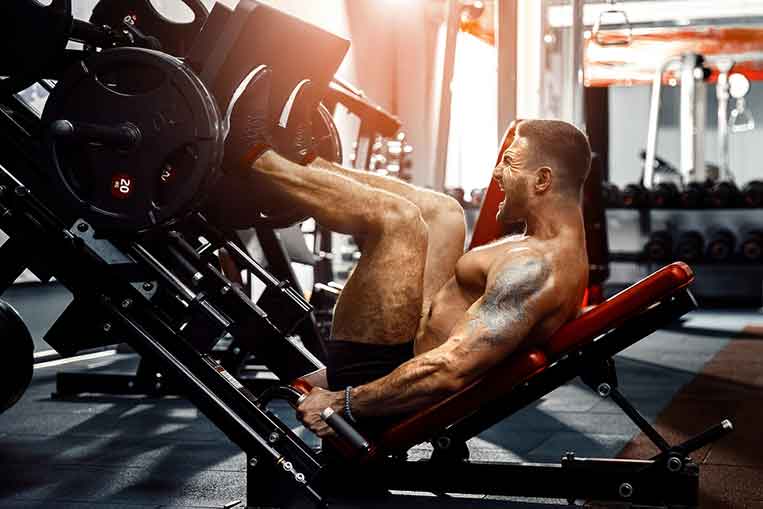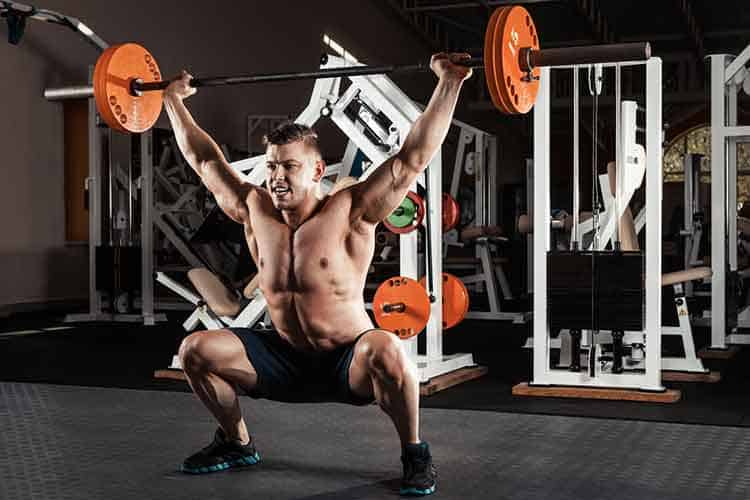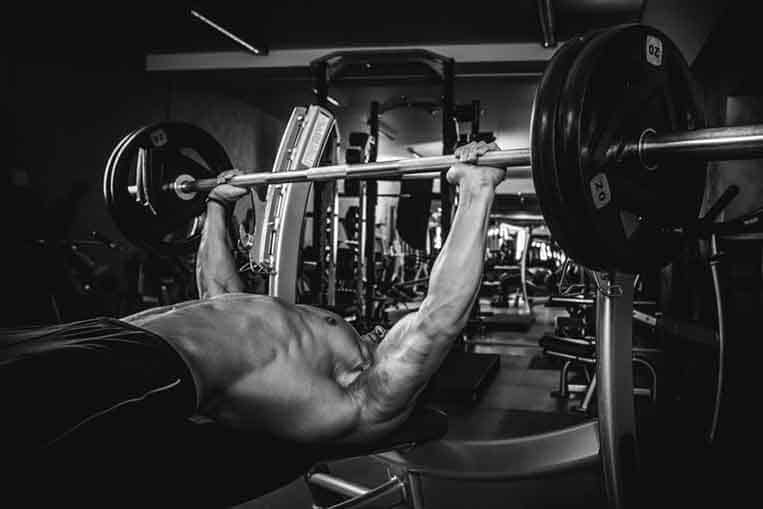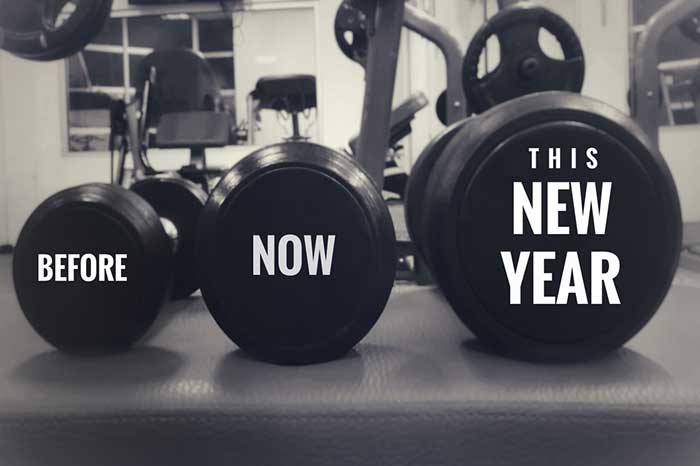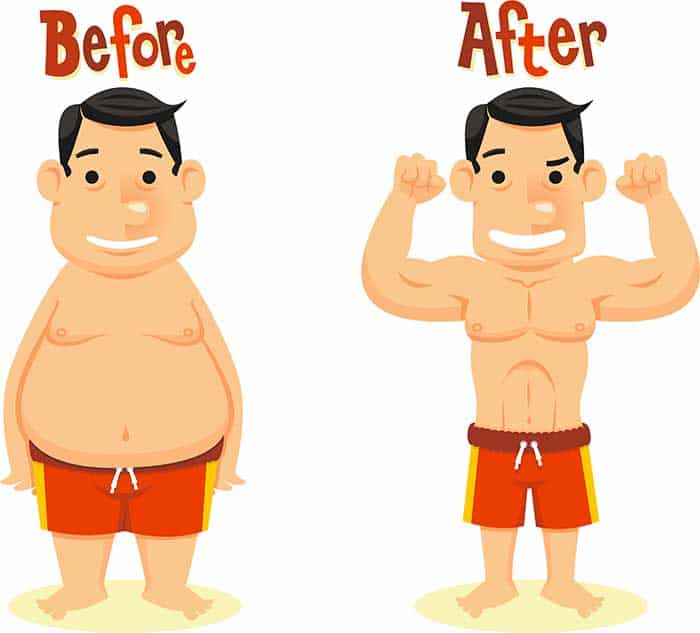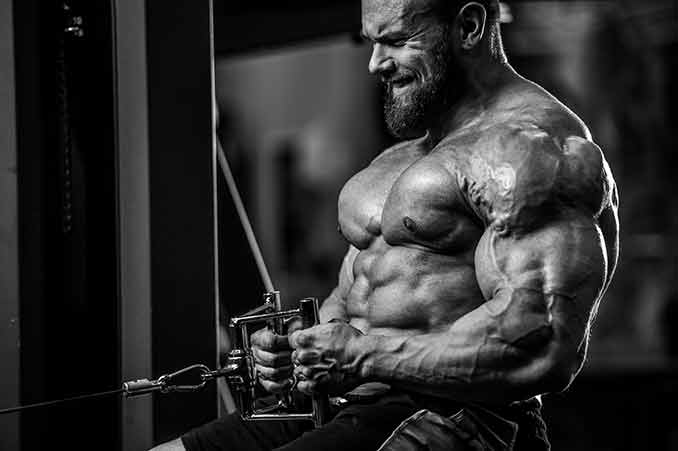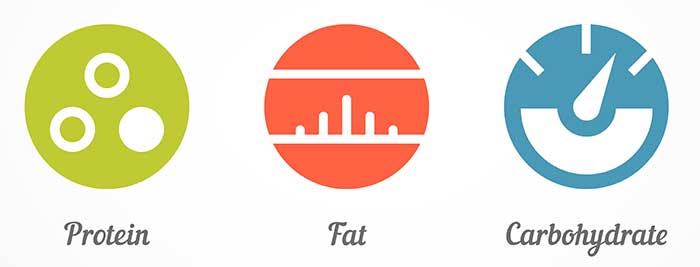
Increase Muscle Hypertrophy with Repetition Variations
These days, most coaches, bodybuilders and strength athletes will recommend that you train with different rep ranges to maximize growth and strength gains.
There was a time not too long ago when a large population of the gym community believed specific muscle strength and growth goals were achieved through the execution of specific repetition ranges.
Somewhere along the road, you’ve probably heard something similar to this:
- 1 to 5 reps builds strength
- 8 to 12 reps for hypertrophy
- 12+ reps for strength endurance
A lot of people have taken that literally and decided to live their gym life in the 12 rep range, because they “want mass gainz, bruh”.
Recommended Article: Legal Steroids – Bulking, Cutting and Strength Stacks. Hardcore BodyBuilding Supplements that will take your workout to the next level. Read more on legal steroids
Problem is, scientific research and real world practices are constantly evolving and finding the best way of doing things. Those repetition counts, it turns out, might not be so accurate…or important in terms of hypertrophy.
What’s more important is varying your rep ranges to stimulate greater adaptation and change within the muscle tissue.
Where absolute strength gains will probably always involve lifting heavy, hypertrophy seems to have a lot more to do with factors such as:
- Metabolic stress
- Time under tension
- Anaerobic respiration
- Range of motion
When you look at a modern, progressive bodybuilding program, you can definitely see a shift towards a new kind of training.

Periodization – Rep Variations for Boosting Muscle Size Gains
Periodized training programs are nothing new, but in the world of bodybuilding, they have taken a while to fully set in.
Amongst other things, some forms of periodization can involve the weekly changing of repetition ranges in order to stimulate maximum muscle growth and never let stagnation set in.
Some variants of periodization include:
- Classic Linear
- Reverse Linear
- Undulating
Undulating periodization is one type of program that involves the weekly shifting of rep ranges, where you might stick with high (15+) reps for a week, then drop to a more power/strength range of 1 to 5 the following week, and so on.
You can even perform different rep ranges for different muscle groups within the same workout.
All of this is to say that the number of repetitions you do can be varied to enhance your results. The idea of rigidly adhering to old school methods is counterproductive, unless you adhere to the training program better if those methods are utilized.
Some people even mess with their repetitions from set to set, or within the sets themselves, and that’s the discussion I want to get to now.

Tri-Set Pyramids
Remember tri-sets from my article on manipulating set design?
Tri-sets are three exercises performed back to back with no rest. They are like a compound set in that the same muscle group is worked for all of it.
Mostly, people perform the same number of reps per exercise within the tri-set, so an example set would look something like this:
- Dumbbell shoulder press x 8
- Dumbbell lateral raise x 8
- Dumbbell front raise x 8
With the tri-set pyramid you actually increase the number of reps each time you change the exercise.
This also means that you begin with heavier weight for the first exercise, and use lighter weight with each change – also known as a descending pyramid or reverse pyramid (because of descending weight).
A typical example would be 5-10-20, where you do 5 reps on the first exercise, 10 on the second and 20 on the last.
Many people perform a compound movement, such as bar and dumbbell presses (shoulder/bench), squats, deadlifts, pull-ups etc. followed by a couple of movements that involve less muscles each.
The third and final exercise is usually an isolation movement. As usual though, there are many different exercise choices you can make. The general idea is to treat it as a modified tri-set and use the same muscle group throughout. So, using a similar example to the one above:
- Standing barbell shoulder (military) press x 5
- Dumbbell seated ‘Y’ shoulder presses x 10
- Cable lateral delt raise x 20
By doing the tri-set in this pyramid fashion, three repetition ranges are used in a single set. This means you hit those ranges that are classically associated with strength/power, hypertrophy and endurance strength.

Twenty Ones – 21s or Sevens – 7s
It doesn’t really matter what you call these, as long as you get the idea.
These sets change the range of motion of the muscle you are working every 7 repetitions.
- The first seven reps are actually half reps, performed from beginning of the movement up to the halfway point
- The second seven reps are also half reps but this time from the half-way point to the full contraction point of the muscle.
- The last seven reps are whole reps, through the entire range of motion, from full extension to full contraction.
These are best done with single joint movements like arm and leg curls. Also, they are more effective if machines or cables are used to ensure constant tension through each group of seven reps.
Dumbbells are not as great because there is little resistance in the first half of the rep. During a bicep curl, for example, there is a lot less tension on the muscle in the first half of the rep when using dumbbells. Cables and machines apply equal tension even at full flexion.
The beauty of twenty-ones is that each part of the set benefits you in a slightly unique way.
The first half of the rep improves flexibility and stimulates muscle growth at full flexion, thereby increasing muscle size along the full length of the tissue.
The middle seven reps are in the range of motion where you are strongest, thus allowing you to put a lot more effort into forcing a maximum contraction.
The last seven reps should burn progressively stronger as you come to the last rep. Ideally, you would not be able to perform another with good form.
Those last repetitions, which are performed deeply in anaerobic respiration, will cause a strong pump and trigger anabolic processes for muscle hypertrophy.
Large multi-joint movements like the benchpress and squats don’t work as well with this because they use too many other supporting muscles that wouldn’t benefit from it. Those movements are better performed as complete range of motion repetitions nearly all of the time.
Twenty-ones increase the working muscle’s time under tension as well as pushing the full range of motion. You should take this into account and lengthen the recovery period for that particular muscle.
Every major muscle group can be trained with 21s, and you can even follow it as a program for a few weeks at a time, adding it as the first 3 or 4 sets of your workout or even the last ones to finish off a group.
The following examples are muscle group and exercise pairings that can be used to perform twenty-one style training.
- Chest – Cable crossover, pec-deck and fly machine
- Shoulders – Cable lateral/front/bent-over raises
- Back – Lat pull downs, straight arm pull-down, cable row
- Triceps – Cable push-downs, rope cable extensions
- Biceps – Cable curls, rope cable curls
- Quadriceps – Leg extensions, hack squat, leg press
- Hamstrings – Leg curls
If you’re starting out with 21/7 sets then you might find you can only complete one in fullness at the beginning.
Don’t worry if this is the case; just complete the rest of your sets in straight-set fashion and go for adding another one the next time you hit that muscle group.
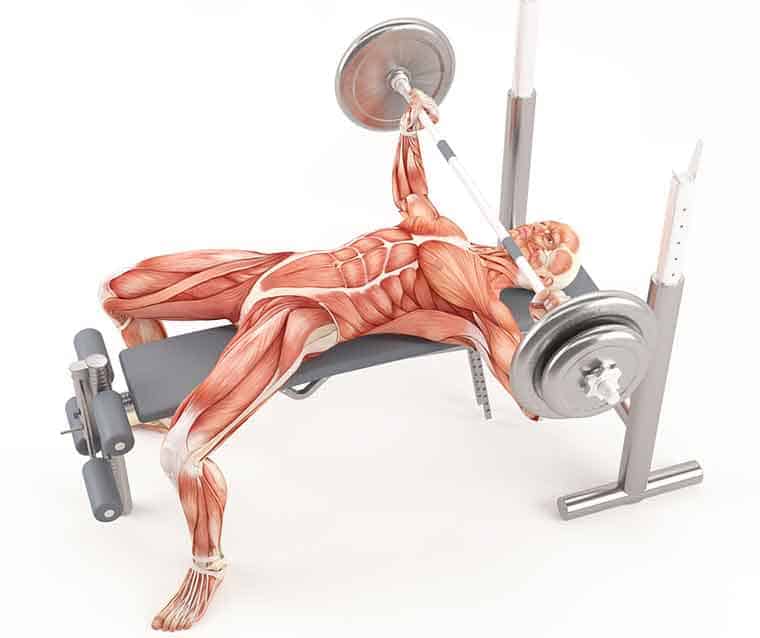
100 Reps Training – Hundreds
The concept of Hundreds training sort of takes a massive dump on traditional approaches such as 3 sets of 12.
It’s pretty much what it looks like – 100 reps.
Thankfully, you do just one set per muscle group, but if you’re thinking that still sucks, then you’re only partly correct.
There are some benefits to throwing down some hundreds that aren’t readily available by any other means. So while it might not seem like your favourite thing to do, it might still be a good idea to incorporate it every now and then.
Hundreds training was once a well used strategy to break through plateaus. It can do this because the results have carry-over to your regular strength and hypertrophy training:
It trains slow-twitch muscle fibres as well as fast-twitch
It increases capillarization, the growth of blood vessels that feed you muscles with blood and oxygen, nutrients and hormones
The majority of your muscles are comprised of roughly an even proportion of slow-twitch and fast-twitch muscle fibres.
Research into the hypertrophy of muscle tissue tells us that growing both fibre types will increase the overall size of the muscle.
Given that slow-twitch muscle fibres are normally used for endurance type activity, the very high repetition aspect of hundreds training actually recruits them for the first half of the set.
Training slow-twitch fibres is not a practice often performed by bodybuilders, especially amateurs who are mostly interested in lifting heavy for single or low double figures reps for multiple sets.
Those same people often avoid doing much intensive cardio, which would also build the slow-twitch muscle fibres in certain parts of the body.
However, hundreds training is a way of exercising those fibres over the whole body, and stimulating biochemical changes which promote muscle growth the likes of which would not otherwise be easy to obtain.
Capillarization is the formation of new blood vessels to feed the muscles with more blood flow, and the oxygen, nutrients, anabolic hormones and everything else that comes with it. [source]
This happens as a result of the metabolic stress that those hundred reps put the muscles through.
Such a long time under tension puts extra demands on the vascular delivery system. And capillarization is one of the fastest ways the body can respond in order to fuel those local increases in demand.
When you return to a more regular program, the benefits from your hundreds training carry over to enhance any other bodybuilding and powerlifting sets you perform.
Hence why it is known as a plateau buster.
Tips for Hundreds success:
- Weight selection is important. You want to get about 3/4 of the way through before the muscle starts to fail
- A mini break at the first sign of muscle failure is okay but you should only take enough breaths as yo have reps left to complete
- Strict adherence to form is paramount. Sacrificing form to complete bad reps is pointless.
- One set per muscle group means you can hit them all twice a week if you follow hundreds as a program
- If you dedicate some full-time program to 100s then only do it for 3 to 4 weeks
Above all else: you need to have some lifting experience. This is not for noobs because anyone who has been lifting for less than a year should not need to break stagnation yet.
Also unless you have some solid experience lifting high-rep sets then you probably won’t complete a hundred reps.
Even one hundred body squats are too much for some. You will want to at least get to the point where you are squatting weight for 20 rep sets before considering hundreds training.

Pyramid and Pump – Rep Variations for Boosting Muscle Size Gains
Pyramids are just ways to describe the sequence in which you lift weights. For the purposes of this explanation:
an Ascending Pyramid is where you start with a specified weight and increase it incrementally with each set
a Descending Pyramid is where you decrease the weight with each set
Confusingly, most ascending pyramids involve descending reps and descending pyramids involve ascending reps.
Just think of the load you are lifting as going up or down in weight and you’re there.
Pyramid and Pump is a cool way to trigger some serious growth, while incorporating some varied loads, varied reps and a set to failure.
Basically, there are two ways to do this, and both have their advantages.
Perform an ascending pyramid of 3 sets, followed by a 4th set of high reps for maximum muscle pump
Perform a descending pyramid of 3 sets, followed by a 4th set of high reps for maximum muscle pump
As you can see, the only difference in the two approaches is whether you increase the weight with each of the first 3 sets or decrease it.
I’ll lay down some examples of both methods.
Tip: It helps to know your 1RM (one rep max) for the exercise you are going to do. If I’m honest you should have a pretty good idea if you are at the experience level you need to be to consider doing this in the first place.
Ascending Pyramid Pump
For this one you’ll do 3 sets of ascending weight (and descending reps) followed by a 4th set of 20 reps.
The reps should go something like this:
- Set 1: 10 reps
- Set 2: 8 reps
- Set 3: 6 reps
- Set 4: 20 reps
Now, you need to select a load for that first set of 10 so that you’d have one or two reps in the tank after completing it. A good guideline for 10 reps is to choose about 60% of your 1RM.
Follow the same logic for Sets 2 and 3. Again, a guideline would be 70% 1RM for 8 reps and 75% for 6 reps.
When you come to the 4th set you need to select a load that will get you at least to 15 reps. This means you will get a really good pump by 20 and possibly even fail. A guideline for this is about 50% of your 1RM.
Descending Pyramid Pump
This is where you start heavier and drop the weight with every set.
Your reps should look something like this:
- Set 1: 6 reps
- Set 2: 8 reps
- Set 3: 10 reps
- Set 4: 20 reps
If you apply the same reasoning as for the ascending pyramid, you would start with roughly 75% and descend to 60% of your 1RM before finally doing a set of 20 at about 50%.
Remember, those are only examples. You can play with the numbers to find what works the best for you, but the ultimate goal of the exercise is to finish on a massive pump.
What this achieves is to prime your muscles with the first 3 heavier sets. Changing the load and reps slightly activates the muscle more completely.
The 4th and final pump set then floods those primed muscles with blood, oxygen and nutrients. The pump fills the cells of the muscles, thereby creating tension and stimulating the cascade of reactions that results in anabolic growth.
For some people, staring heavy with a descending pyramid is difficult. If that is the case then the ascending pyramid might be a better match.
What I find with the ascending pyramid – where you increase the load per set – is that the change from the 3rd set (with the heaviest weight) to the 4th ‘pump’ set (with the lightest weight) is dramatic, and really lets you put some power into the last set.
However, on days when you are feeling good and feel you can lift heavy first, i.e. with the descending pyramid, you can put some bigger lifts in at the start because you haven’t fatigued yourself.
Of course, it’s always best to ramp up to the heavy weight with some warm up sets, but you should not do to many reps in the warm up so that you don’t waste energy.
After warming up, you can rack a heavier weight than 75% 1RM for the descending sets – maybe start with 80% and add a little per week. This makes you work a little harder on strength building for the first set, before moving on to hypertrophy with the following sets and then the muscle pump set at the end.
When you hit the heaviest sets first, you will recruit the most muscle fibres possible, which results in greater muscle growth and strength improvements. You can also take each set to near failure, or failure, which is again great for stimulating growth. In that sense, it’s a bit like a drop set.
Following an ascending pyramid, you cannot work to failure on each set because the next set will be heavier and you will miss the first rep if you do.
The downside of descending pyramids is that you are more prone to injury because you are beginning with the heaviest weight. To reiterate, a good warm up is crucial for heavy lifting.
For people who have been lifting less than 6 months, I would advise sticking to ascending pyramids for the time being.
Once you are confident that you have developed your core strength, stabilization muscles, and accustomed your ligaments and tendons to heavy lifting, you can think about doing descending pyramids.
By the way, some people call descending pyramids, ‘reverse’ pyramids. It’s all the same.
Diamonds, Octahedrons and Triangles
Pyramids are a linear way of looking at progressive load selection relative to repetition count in weight lifting. You don’t really have decide between ascending or descending pyramids at all.
You can do both.
Ascend then descend.
I call these “diamonds”, but other people call them triangles (they are wrong). If you put two pyramids base to base you get an octahedron. Basically an 8-sided 3 dimensional diamond (or rhombus).
Why does that matter?
It doesn’t.
Anyway, it’s probably best to stick with 2 dimensional descriptions given that all we’re talking about here is a visual representation of increasing and decreasing weight.
Diamonds it is.
With these, you get most of the best of both worlds. You can ascend from about 60% of your 1RM to your 75-80% weight and then descend back to 60% and then finish with a 50% pump set.
This allows for the slower increase to heavy weight, but also lets you let the failure sets loose on the backside of the workout.
The only drawback of diamonds is that you aren’t getting maximum muscle recruitment because you aren’t hitting the heaviest weight off the bat.
Nonetheless, they are excellent for stimulating muscle growth. and the pump is ridiculous.
Four and Five Rep Volume Increments
Before we get into this, let’s just recap on Tri-Set Pyramids and Pyramid Pumps.
With tri-set pyramids, you decrease the weight WITHIN the set itself, not resting until the 5-10-20 reps have all been completed. You also change the exercise WITHIN the set, generally moving from compound lifts to isolation movements as you go.
With regular pyramids and the pyramid pump, you increase or decrease the weight AFTER each set. You also perform the same lift/exercise with each set change.
The Four and Five Rep system I’m about to talk about has 2 variants, and they are both blends of the two I’ve just re-capped…sort of.
Variation #1
With this program, you perform exercises in the usual order: compound/multi-joint lifts, followed by lifts of increasing muscle isolation, for example:
- Bench press
- Incline dumbbell press
- Cable cross over
- Seated machine fly
Do 3 sets of each, like a regular chest/whatever workout, but each time you change to the next exercise, you add 4/5 reps to your sets.
The whole thing looks something like this:
- Bench press – 3 sets x 4 reps
- Incline dumbbell press – 3 sets x 8 reps
- Cable cross over – 3 sets x 12 reps
- Seated machine fly – 3 sets x 16 reps
The basic idea is to do your heaviest sets with your strongest lifts and continue increasing the reps as the number of recruited muscles drops, until you are doing isolation movements in the last round.
If you do this correctly, you should reach near failure on the last rep of each set and failure on the final16-rep sets, which should also give you a great pump.
By changing the rep count with each change of exercise you are hitting each of the classic rep ranges of bodybuilding to stimulate gains in both strength and size.
If I’m following this program for a while, I tend to go with 5 rep increases on lower body exercises and stick with 4 rep increases on upper body work. The bigger leg muscles really benefit from those 20 rep finishers!
Variation #2
The other way to do this is to do all the rep ranges for all the exercises. This means doing 4 sets of the same exercise with incrementally increasing rep-counts.
That means doing something like the following:
- Back squat – 4 sets x (5, 10, 15, 20) reps
- Landmine squats – 4 sets x (5, 10, 15, 20) reps
- Leg press – 4 sets x (5, 10, 15, 20) reps
- Knee extensions – 4 sets x (5, 10, 15, 20) reps
The drawback here is that you must strip weight off the machine or bar, or select different dumbbells after every set. But if you can handle that then it’s an awesome way of hitting all the rep-ranges for each part of the muscle group within a single session.
Fixed Load – Target Reps
This is a nice program you can follow for a while to help you see your goal coming closer week by week.
I like this approach because it’s really simple and adds some depth to your training and growth that you might otherwise forego. You can also do it alongside other training methods so that you don’t feel you are putting everything else aside.
Here’s what it involves:
- Your Big 4 compound lifts – Bench, Squat, Deadlift, Shoulder press – plus the Pull Up.
Find the weight for each exercise that you can complete 8 reps with. For the pull-ups, that might be bodyweight or assisted bodyweight – and that’s fine. - When your normal routine comes around to these exercises, you will complete as many reps with that original 8 rep weight as possible. Repeat this weekly until you reach your target reps.
I suggest 15 reps is your target.
NOTE: you can either add this in as a one-set test every time or you can follow it as a program and do 3 sets of maximum reps. Follow the rest of your training as normal.
REMEMBER: Always hit that exercise first and always use the same load/weight that you could originally perform 8 reps with.
The interesting thing about this is that you are taking a weight that is on the cusp of your strength / hypertrophy boundary in terms of repetitions, and taking it to the hypertrophy / strength endurance level.
During the process, you are gaining size, strength and stamina. Of course when you reach your 15 rep goal, you will be able to increase the weight that you can do for 8 reps. And on the other end of the scale you will be able to go deep into big 20 rep volume sets with weight that you could only do for 12 reps or so before.
Sticking to it for a few weeks is tough because you will be tempted to increase the weight on the bars. It’s okay to do that, as long as the first exercise you do is to perform this benchmark test.
For me, when you have a goal like XXX lbs for XX reps, it is better to focus on that and concentrate on this as a micro-cycle. It’s only for your bigger multi-joint lifts so you can continue as normal for your smaller muscle groups and isolation exercises.
You can do it for your isolation movements too – no-one is going to stop you – but I find that exploring different rep-ranges and varying loads on the machines and cables will help your progress because it will stimulate adaptations that will help the main Fixed Load Target Reps effort.
Related content:
Ostarine (MK-2866) works by attaching itself to specific proteins in the human body called androgen receptors. Once it affixed itself in the receptors, it further directs it to grow lean muscles.
Bulking and cutting to build muscle and burn fat – here is the fast way to packing on muscle and burning excess fat so that the lean muscle mass shows through.
YK11 Myostatin or YKBulk. If you want to build muscle quickly and thinking using YK11 Myostatin then use YKBulk instead – it’s just as effective, cheaper and won’t cause side effects. It’s also legal!


